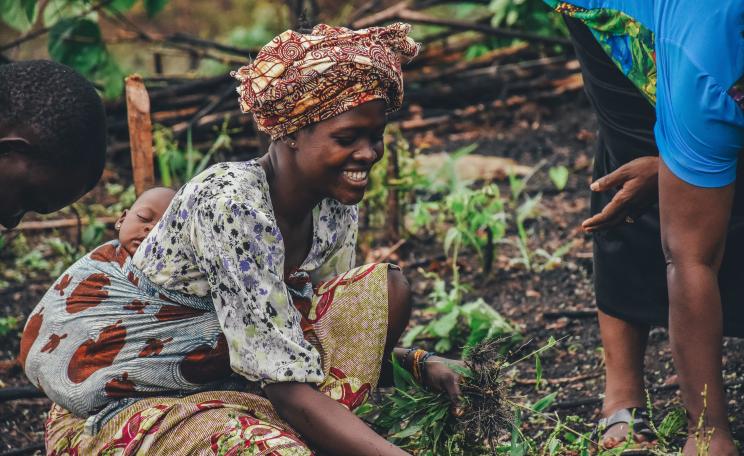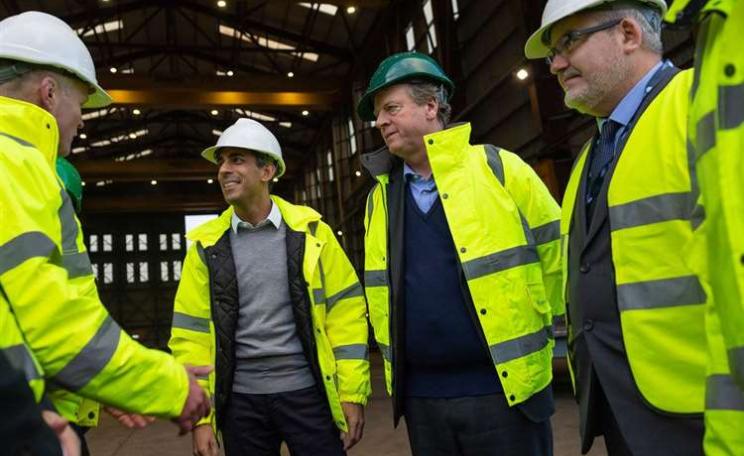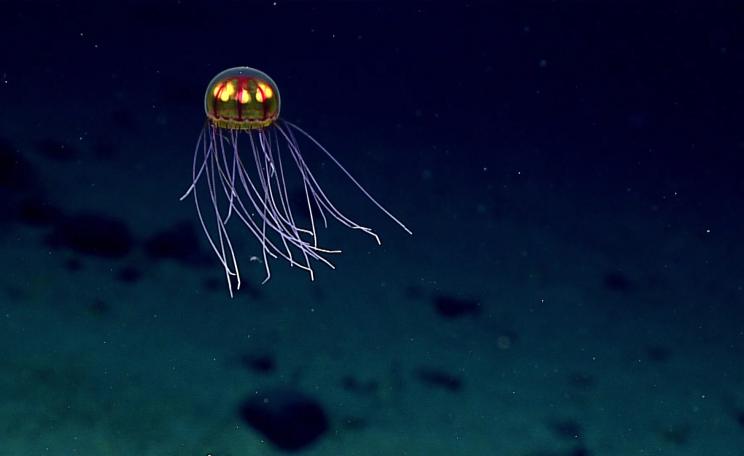Climate breakdown is a harder thing to tackle, because evolution doesn’t move that quickly.
I meet David Lindo, UK birdwatcher, broadcaster, writer and photographer, on a sunny autumn morning at Wormwood Scrubs, which is home to the infamous men’s prison.
This article first appeared in the latest issue of Resurgence & Ecologist magazine.
This treasured North London green space, which is one of the largest areas of common in the entire city, is also a hotspot for migrating birds – but sadly, and despite being a haven for wildlife, a large scrap of this scrubby grassland is now currently being decimated by the controversial HS2 development.
Curiosity
“You’re in my garden, Yasmin,” says Lindo, who has been enjoying the site for around a quarter of a century. He tells me he first began visiting it back in the 1990s when he was commissioned to write a book on birdwatching. At that time, he happened to be working close by and the Scrubs had evoked his curiosity.
Back then, the playing fields were mainly used by the MOD to train horses, and when Lindo first started to explore the site it wasn’t recognised by anyone as a spot for migrating birds. He describes finding a migratory bird on day seven of his explorations as a biblical moment. The sun warms my face, bird calls are carried on the fresh air, and clusters of mushrooms spring from the damp earth.
It was raining last night, and although birds usually start migrating in the darkness – since the air is cooler then and also they’re less likely to run into predators – it’s likely that today they’ll be flying in the light instead in order to avoid the rain, explains Lindo. So we adjust our binoculars and he sets up a birding app on his phone called eBird to record our findings, which I later learn is a crucial part of the practice.
Holy
“When I first came here a lot of my friends would ridicule me, like, ‘What are you coming here for?’ But there’s so much to see in urban areas,” Lindo tells me. We spot a chaffinch in the scraggly tree branches. “Chaffinches are quite interesting, as they form separate-sex flocks. Their scientific name is Latin for ‘bachelor’,” he adds. Despite growing up in London, Lindo has always been fascinated by birds, and I ask him how it all began.
“I’ve been interested in natural history since I was very young. But I had no mentor, I had no one to take me anywhere, and I was told that Nature was in the countryside. My earliest recollection of it is of taking a book from the library. This book had every bird species from the Middle East and North Africa. It was like finding the holy scripture. I still have a copy of it to this day. So that’s when I started looking around myself, teaching myself, and noticing that there are a lot of things around,” he tells me.
We make our way further into the Scrubs, which consists of a series of playing fields, grassland and small patches of woodland. We spot a bunch of lesser black-backed gulls flying north in a V-formation, picturesque against the blue sky. “Some of these birds fly to Spain and north-western Africa and return in the spring,” Lindo explains. There is a thrush in the bushes, enjoying some of the last rosehips of the season. We can hear the ‘tick-tick-tick’ of a robin’s alarm call.
Climate breakdown is a harder thing to tackle, because evolution doesn’t move that quickly.
Drilling
As with most common green spaces in London, residents have long resisted the encroachment threat of developers. But in this case they are losing, since part of the land was sold to HS2 in 2021 and development has already begun.
The £42.5-billion railway project is set to cut across 250 miles of British countryside and has been flagged by environmental campaigners for irreparably damaging, amongst other areas, five internationally protected wildlife sites, 693 local wildlife sites, 108 ancient woodlands and 33 legally protected sites of special scientific interest, according to a survey by The Wildlife Trusts.
We can hear the drilling of HS2 diggers from the far end of the field. Some of the wildest parts of the Scrubs are being dug out to build an access road. Local residents have formed Friends of the Scrubs in order to protest, and they have been fighting the onslaught with the help of London Wildlife Trust, Lindo and other public figures.
“It’s a sore subject,” admits Lindo. “I’m close to this place. It’s part of me. I’ve come here after break-ups. I came here directly after my dad died. It’s uplifting because you feel part of something – you feel that something is there that accepts you and loves you unconditionally.” Bird watching is clearly more than a hobby for Lindo. It is a way to protect the landscape he loves.
Respect
“I’ve spent 25 years studying this place and putting my findings on the map for public record. Other birders come here and don’t make their records public – and then developers will take advantage of gaps in data. In the past there was none of this development and I’ve seen over 150 different bird species here.
In the summer we could get flocks of up to 250 goldfinches. Those kinds of biblical numbers have changed now. It’s very rare. You can physically see the changes. That’s partly down to habitat loss, hunting along migratory routes, climate breakdown – all these issues bombarding at the same time. I owe this place respect. I just want to try to talk about it as much as I can.”
We witness a group of carrion crows mobbing a magpie over in the distance. We also happen to spot the rare sighting of a short-eared owl being attacked by crows in mid-flight. Lindo believes the nearby men’s prison was once feeding the crows, which contributed to the growth in their population. “They’re just bullies,” he says of the fighting birds. “But all the birds here are under threat all the time,” he adds.
Uninhabitable
“In the past, there were also less people here, less dogs, less people flying model aircrafts. Some of the wider threats birds face are from agricultural pesticides, modern buildings that don’t have nesting spaces, and the grubbing up of hedgerows.”
According to the RSPB, in the last 50 years tree sparrows have declined by 95%, starlings by 71%, and song thrushes by 56%. To make matters worse, last year 3.8 million birds died in the UK’s largest outbreak of bird flu. We hear a long-tailed tit calling, and the squawking of parakeets. We also spot a jackdaw flying in the same group as a carrion crow. “They don’t normally hang out like that,” Lindo remarks.
“How strange that the jackdaw is an accepted member of the crow crew,” I say. Lindo isn’t surprised. “The thing about watching birds in urban areas is that if you keep your heart and your mind open you can see anything. You’ve got to keep that freshness in your spirit about anything in life.”
We spot a blue tit hopping across the bare branches of a tree. A herring gull flies overhead. We can hear the high-pitched call of a long-tailed tit. But in truth, we catch only snippets of these birds’ lives. And whilst many birds don’t migrate at all, some of them cross some of the most uninhabitable landscapes over their lifetime.
Evolution
Swallows, for example, live an average of four years, even though naturally they could live up to 22 years if they could survive all the threats to their existence. And every year they embark on a 200-mile-a-day trip, which starts from the fields of England and takes them through western France and Spain and into Morocco, before crossing the Sahara Desert and the Congo rainforest – and finally arriving in South Africa and Namibia.
“I’ve been on various points of these birds’ migratory routes, whether it be in Africa or Asia, and I can still find those birds,” Lindo tells me. “So when people say birds adapt to the city, it’s a hard one to call because birds come from different places around the world. It doesn’t matter where the bush is if they can eat and nest.
"We don’t really know where these birds go, what they see. In some ways birds are adapting to the city by creating smaller territories, or changing the pitch of their calls because of noise pollution – but climate breakdown is a harder thing to tackle, because evolution doesn’t move that quickly.” In understanding bird behaviours more deeply, I feel a twinge of sadness for the struggle they face every day just to survive.
Connection
“Every living thing has a story,” says Lindo. “But I have an issue with the way Nature is sold to us by the media. It’s regarded as just a form of entertainment, and there’s no connection at all. You’re looking at stuff in the Serengeti, but you don’t relate to what’s happening down Dalston High Street or wherever you are. Your little flowerpot on your windowsill is linked to the Congo, to the Amazon, to the Antarctic, to the Siberian Taiga.”
Lindo is currently in the process of setting up The Urban Birder NDM Foundation (named in memory of his birdwatching friend Nigel David Mill), which has a charitable remit to connect inner-city children to Nature across the UK.
“This is not about bussing kids out into the countryside, but about getting them to actively participate in the construction of urban wildlife sanctuaries,” he says. He hopes the project will eventually expand globally.
Boundaries
My birdwatching time with Lindo draws to a close. We have seen almost 30 different bird species in this short time, field data he adds to eBird.
Birding requires us to tune in, to be present and vigilant to our surroundings. And many of these skills, Lindo says, he also applies to his everyday life. “A lot of people in my world are in doubt and scared and don’t want to do anything new.
"But I’m very interested in pushing boundaries and making a noise, and I’m not afraid to ask for what I need. I didn’t know what course I was on, but I had to walk this road, and I wouldn’t let anyone talk me out of it. And now I live a life about which, if I were to die tonight, I would have no regrets.”
This Author
Yasmin Dahnoun is assistant editor at The Ecologist. You can find out more about David Lindo’s work and become a member of The Urban Bird World global community at www.theurbanbirderworld.com. This article first appeared in the latest issue of Resurgence & Ecologist magazine.







